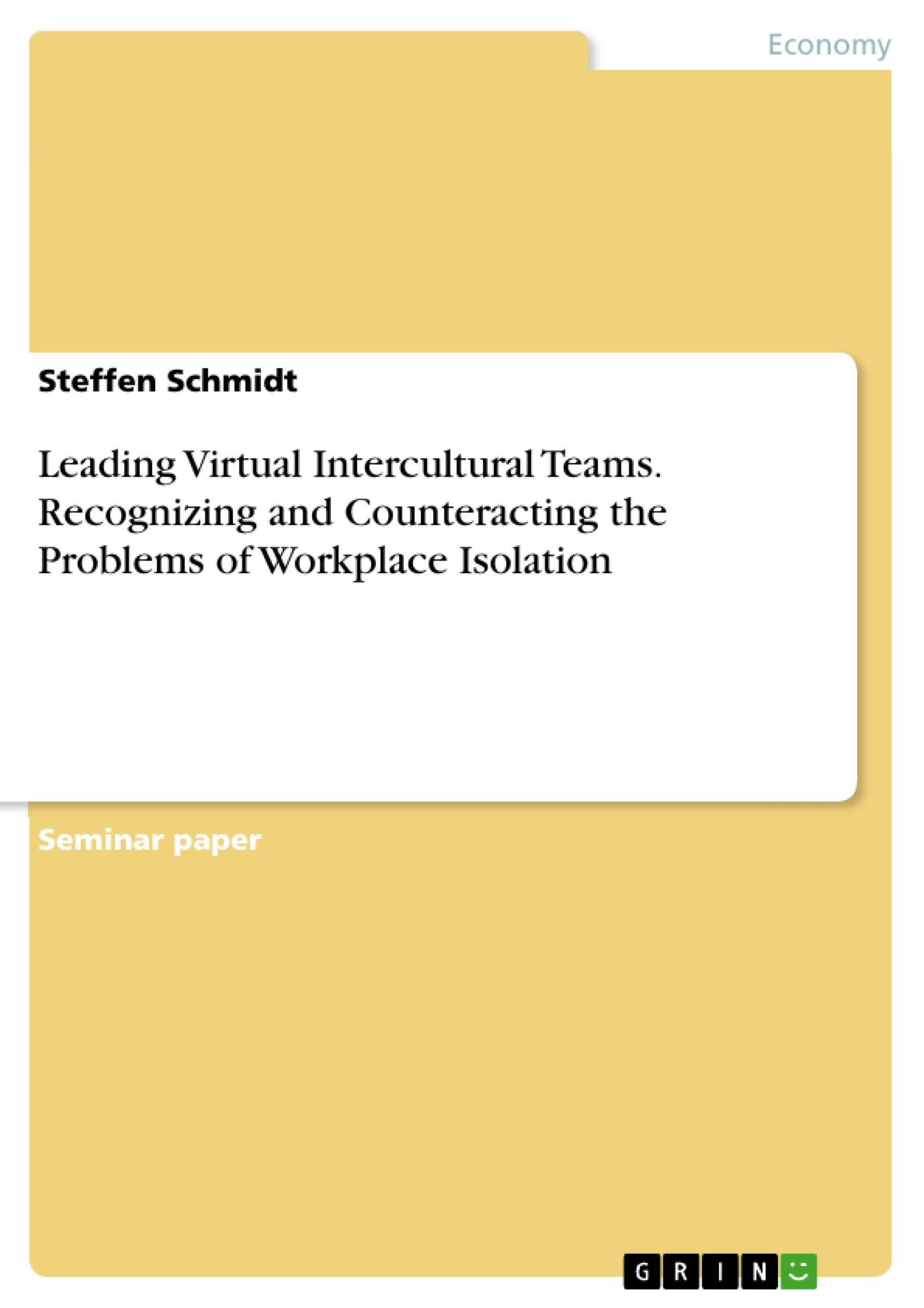In an environment of fast and consistent technological progress, globalization and growing competition, companies are facing a strong pressure nowadays. The knowledge-based economy leads to a growing extent of client-side requirements forcing more and more companies and organizations to realign their business activities in a new way in order to cope with the current economic situation. Cost-efficiency, presence in the markets and the possibility to gather the best employees in their own organization are the central starting points of a strategy to position for the future. One specific measure is the decentralization of teams, that shall work together to jointly reach their targets. The proceeding digitalization of the media and virtualization of several areas of life pander to this development of decentralization as the new electronic communication systems facilitate the interaction between the decentralized team members and enable the companies to enlarge their attempts concerning remote offices.
The present term paper particularly deals with the problems arising within decentralized teams. It examines the negative consequences of group efficiency in virtual intercultural teams, making several assumptions how the perception of Workplace Isolation affects the employees negatively and provides recommendations for virtual team leaders in order to recognize and counteract these problems. In the form of a flow chart, this term paper provides a course of procedure for the successful implementation of a virtual team with a minimized risk of workplace isolation. This flow chart considers the prevailing scientific view on this topic.
The author works for a listed multinational corporation as a member of an international sales team with intercultural structures. For this reason, from the very start there has been a particular interest in the findings and insights to be obtained in the framework of the work for this term paper. In course of the work the author gained further knowledge about the design and successful implementation of high-performing virtual teams.
Inhaltsverzeichnis (Table of Contents)
- Introduction
- Economic background
- Objective of this work
- Definition of virtual intercultural teams
- Threats and opportunities for virtual intercultural teams.
- Definition of workplace isolation
- WI: Management challenges and measures to overcome them
- Flow-Chart
- Conclusions
- Literature
Zielsetzung und Themenschwerpunkte (Objectives and Key Themes)
This term paper examines the challenges and opportunities presented by virtual intercultural teams, with a particular focus on the negative consequences of workplace isolation for group efficiency. The paper aims to provide recommendations for virtual team leaders to recognize and counteract these problems, ultimately leading to the successful implementation of virtual teams with minimized risks of workplace isolation.
- The impact of workplace isolation on virtual intercultural teams
- Management strategies for mitigating workplace isolation
- The role of technology in facilitating communication and collaboration
- The importance of cultural awareness and sensitivity in virtual teams
- Building a successful virtual team structure
Zusammenfassung der Kapitel (Chapter Summaries)
The paper begins with an introduction that establishes the economic context for virtual intercultural teams, highlighting the growing pressure on companies to adapt to globalization and knowledge-based economies. The introduction further defines virtual intercultural teams and outlines the objective of the paper, which is to examine the negative consequences of workplace isolation and provide recommendations for virtual team leaders.
The following chapters delve into the specific challenges and opportunities presented by virtual intercultural teams. The paper examines the potential threats and opportunities associated with this team structure, providing insights into the unique dynamics of virtual collaboration. The paper also delves into the definition of workplace isolation and its impact on team performance. It then explores the management challenges and measures to overcome them. This chapter will likely focus on specific strategies and approaches for virtual team leaders to effectively address the issue of workplace isolation, potentially including techniques for building trust, fostering communication, and promoting a sense of belonging.
Schlüsselwörter (Keywords)
Virtual intercultural teams, workplace isolation, team efficiency, management challenges, communication strategies, cultural sensitivity, technology, globalization, knowledge-based economy, remote work, team building, collaboration, leadership, organizational structure.
- Quote paper
- Steffen Schmidt (Author), 2014, Leading Virtual Intercultural Teams. Recognizing and Counteracting the Problems of Workplace Isolation, Munich, GRIN Verlag, https://www.grin.com/document/338313



